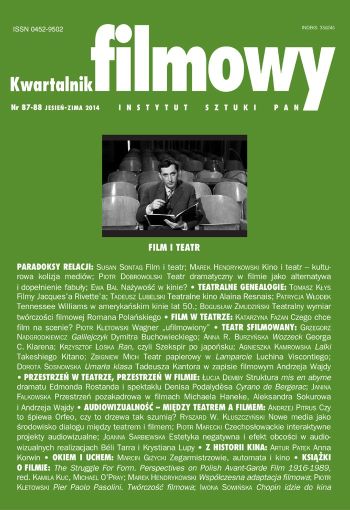Zegarmistrzowie, automata i kino
Watchmakers, Automata and the Cinema
Author(s): Marcin GiżyckiSubject(s): Theatre, Dance, Performing Arts
Published by: Instytut Sztuki Polskiej Akademii Nauk
Keywords: Automaton
Summary/Abstract: The history of the cinema and watchmaking are strongly related. Without the Maltese cross, the mechanism used in watches since the 18 th century, there would be no film projectors. Perhaps that is why in the cinema almost from its inception, various automata (plural of “automaton”), that is anthropomorphic machines or artificial people appear. The peak of popularity of these devices was in the 18th and 19th centuries, when their construction lay largely in the hands of watchmakers. Giżycki discusses the role played by the 18 th and 19 th century automata in a few selected films, such as "Hugo" (2011) by Martin Scorsese, "Fellini’s Casanova" ("Il Casanova di Federico Fellini", 1976) by Federico Fellini and "The Best Offer" ("La migliore offerta", 2013) by Giuseppe Tornatore. Stories by Stanislaw Lem, Walerian Borowczyk and Bruno Schulz are also mentioned. In conclusion, the author states that the perfect automaton is always just a being that is unattainable, an illusion, a vanishing point, an unfulfilled desire of its creator-demiurge.
Journal: Kwartalnik Filmowy
- Issue Year: 2014
- Issue No: 87-88
- Page Range: 286-292
- Page Count: 7
- Language: Polish

